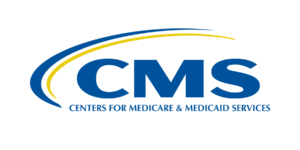(This article is the culmination of “Implement Telehealth into Your Medical Practice Parts 1 and 2)
In the past, the rules and restrictions surrounding the billing of telemedicine visits by Medicare were very tight. Because of the global pandemic that we currently find ourselves in, there has been a loosening of restrictions surrounding this service line, as we discussed in the previous installments. Medicaid and commercial payers have their own sets of regulations regarding telemedicine that also need to be understood in order to effectively bill. The question now remains: How do you start billing for the telemedicine service rendered? In this post, we will discuss the laws surrounding this so that you can get your claims out without delay, and hence, get paid quickly.
 Medicare
Medicare
Medicare has started paying for office, hospital, and other visits made via telehealth across the country and including in patient’s places of residence, and can be billed retroactively from March 6, 2020, under the 1135 waiver authority and Coronavirus Preparedness and Response Supplemental Appropriations Act.. These visits will be paid at the same rate as in-person visits. The OIG is allowing practices to waive or reduce copays and patient balances, but is not requiring it.
The common HCPCS and CPT codes that can be used for billing telemedicine are as follows, however this list has been updated to include over 80 codes during this crisis and can be downloaded HERE:
99201-99205: Office or other outpatient visits.
G0425-G0427: Telehealth consultation, emergency department or initial inpatient
G0406-G0408: Follow-up inpatient telehealth furnished to beneficiaries in hospitals or SNFs
Medicaid
Unlike Medicare, Medicaid reimbursement varies from state to state, though it has some form of coverage in the majority of states. Telemedicine delivered to a patient who is at home tends not to be reimbursed by Medicaid programs. Some may also bar out-of-state medical licensing, require a preexisting relationship with the patient, and limit coverage to specific diagnostic codes. Many Medicaid programs also exclude some providers for low-income patients. With the emergence of COVID-19, however, at least one state is talking to the CMS about easing Medicaid rules. Washington is considering asking the CMS for either a Section 1115 or 1135 temporary waiver to allow it to modify Medicaid payment and other rules governing telehealth, healthcare worker certification, eligibility for elderly and disabled people, and coverage for supportive services like housing. Most Medicaid programs pay the same rate to telemedicine services as face-to-face visits, so it will be interesting to see if changes and loosening of restrictions universally will begin to apply to this program through this emergency.
Commercial Payers
Commercial reimbursement for telemedicine is very common, however, they also set their own rules about covering telehealth services. Changes are occurring in this realm though. Recently, commercial payers have started expanding their telehealth coverage to patients. Aetna, for example, as well as BCBS plans, have started to waive telemedicine visit copays. Some things to keep in mind, however, is that some insurance companies only offer visits with their contracted telehealth provider, not with the patient’s own physician. It would be prudent to go through your current payer policies with a fine-toothed comb.
Now that you have a blueprint to begin offering telemedicine services to your patients, you can set forth confidently into this new virtual realm, which is surely here to stay.
If you missed the preceding installments of “Implement Telehealth into Your Medical Practice”, start HERE
Please view a more detailed technical post on the codes and guidance from our Wendy Samuels, CPC click the link HERE